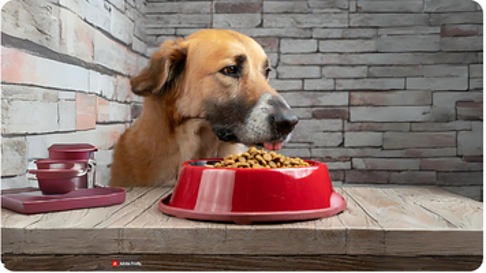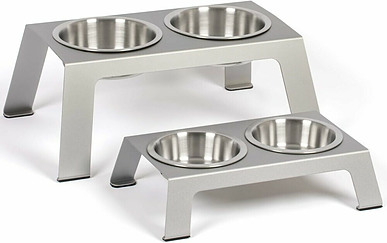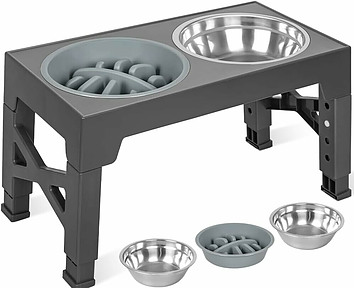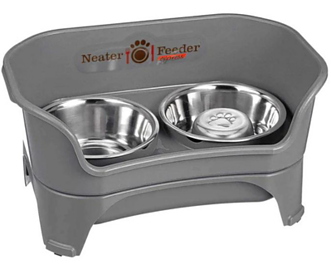
Today, I’m going to be talking about raised feeders for dogs – a simple but innovative way to serve your furry friend’s meals. These feeders, which elevate the food and water bowls off the ground, aren’t just a modern pet luxury; they’re a product of careful consideration of a dog’s health and eating habits.
So my question to you today is: what’s the story behind raised feeders? Well, they began as a tailored solution for senior dogs or those with medical needs. Over time, they’ve edged into the mainstream as pet owners have observed their benefits for canines of all shapes and sizes.
I’ll be guiding you through the nuances of using raised feeders, addressing a common debate among pet owners and veterinarians alike. Are they merely a trendy accessory, or do they actually contribute to the health and wellbeing of our dogs?
You’re going to find out about these aspects and more as we delve into the health and wellness benefits of raised feeders in the next section.
Health and Wellness Benefits of Raised Feeders
You’re going to find out about the health perks that come with raising your dog’s diner. When your furry friend uses a feeder that’s elevated to their level, there’s a buffet of benefits to their wellbeing.
Firstly, we’re talking digestion. Dogs can be greedy gobblers, and that often leads to a lot of air swallowing and discomfort. Raised feeders can encourage a less rushed mealtime, reducing the chance for bloating. It’s not just the speed; it’s also about the position. Eating from a level that’s more natural means they aren’t straining to reach their food.
Comfort is paramount for dogs with arthritis or other mobility issues. Stooping low can be a literal pain in the neck (and other parts). Elevated feeders bring the meal to them, so they don’t have to stretch painfully to reach their kibble.
Remember, it’s not just comfort we’re focusing on. A feeder at the right height promotes a healthier posture, which can translate to better joint health over time. This seems especially useful for larger breeds that might be prone to issues like hip dysplasia.
Then there’s the benefit that a raised feeder encourages dogs to take their time while eating. This is a big win for dogs that act like vacuum cleaners during meal times, as eating too fast is a fast track to problems like choking or gastrointestinal discomfort.
Of course, these benefits often make the headlines, but it’s important to note that they can vary from dog to dog. While some canines might show an obvious improvement, others might seem indifferent to the change. Consulting with a vet is the best way to determine if a raised feeder would be beneficial for your specific pooch.
Considerations and Potential Risks

You’re going to find out about the flip side of using raised feeders now. Elevated feeders are not the perfect fit for every dog, and it’s crucial for pet owners to understand the potential risks before making a decision.
One significant concern often discussed is the potential for increasing the risk of bloat, especially in large and giant breeds. Bloat, or gastric dilatation-volvulus (GDV), is a life-threatening condition, and there’s debate among experts about the role elevated feeders play.
Next, think about the design features like height and stability. The right feeder height is tied to your dog’s elbow height for maximum comfort. Meanwhile, a wobbly feeder can be a no-go for enthusiastic eaters, as it may tip over and cause accidents or discourage use.
Another concern is with the materials used. You want surfaces that are easy to clean and don’t harbor bacteria. Some materials like plastic can scratch easily, creating spaces for bacteria to multiply, while others like stainless steel may be more hygienic.
Lastly, the design can impact how a dog eats; for instance, a feeder with too wide a bowl can strain the neck of smaller breeds. Consider too the widespread myths about raised feeders, such as they can cure any digestive issue. While they offer benefits, they are not a one-size-fits-all solution.
With these considerations in my mind, let’s shift to how you can pick the right feeder for your furry friend. I’ll take you through a range of brands and shopping tips that’ll help you make an informed choice in the next section.
Choosing the Right Raised Feeder: Brands and Buyer’s Guide
I’m here to help you with the maze of choices when it comes to selecting the perfect raised feeder for your canine friend. You’re going to find out that selecting the right one might be easier than you thought!
First off, focus on the height and stability that’s appropriate for your dog’s size and breed. Choose something that resonates with you aesthetically, but don’t sacrifice function for style.
Some known brands in the market include PetFusion, Neater Pet Brands, and OurPets. Each brand offers different designs and features, like adjustable heights, anti-slip feet, or extra compartments for storage.
If you’re leaning towards customization, companies such as Elevated Dog Bowls, and CustomMade can craft a feeder to suit your dog’s specific needs. Don’t worry too much about the price upfront; think about the long-term benefits of investing in a high-quality feeder.
(As an Amazon Affiliate, I may earn a small percentage from qualifying purchases, which will not change your price at all.)
(This post contains affiliate links and I may make a small commission for qualifying purchases which will not change your price at all.)
Here’s one we found if you’re looking for something with some style-
 This feeder can be found at Amazon as well as Chewy.
This feeder can be found at Amazon as well as Chewy.
If a more basic model with adjustability is what you are looking –
 This feeder can be found at Amazon as well as Chewy.
This feeder can be found at Amazon as well as Chewy.
Another popular feeder which can be purchased in a number of different colors –
 This feeder can be found on Amazon as well as Chewy.
This feeder can be found on Amazon as well as Chewy.
Look into user reviews, and don’t be afraid to reach out to other pet owners or forums for advice. Remember, your first choice doesn’t need to be your last. You can always adjust your approach down the road.
In conclusion, there’s a lot of opportunity in choosing the right raised feeder. A solid purchase can lead to a happier, healthier pet – and that’s the ultimate goal. Be sure to weigh the pros and cons outlined in this guide, and choose the raised feeder that will best serve your furry companion’s needs.
We hope this information will help out if you are considering a raised feeder for your pup to enjoy it’s Wholesome Canine Cuisine.
As always, feel free to leave any questions or comments.
